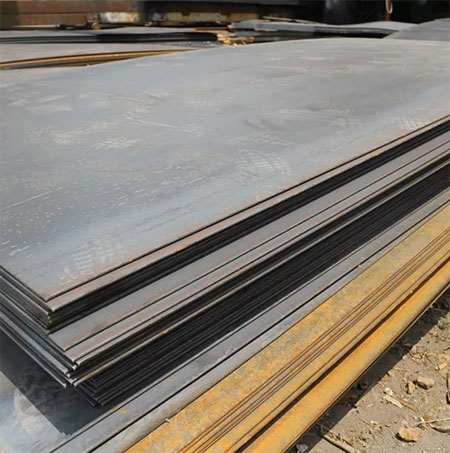News Center

ABS DH36 is a specification for high-strength shipbuilding steel, specifically for use in the construction of offshore structures and marine equipment. Here are some key specifications for ABS DH36:
Chemical Composition: The chemical composition of ABS DH36 steel typically includes carbon (C), manganese (Mn), silicon (Si), phosphorus (P), sulfur (S), chromium (Cr), nickel (Ni), molybdenum (Mo), vanadium (V), and other trace elements. The exact composition may vary depending on the manufacturer and specific product requirements.
Mechanical Properties: ABS DH36 steel has specified minimum yield strength of 355 MPa (51,500 psi) and ultimate tensile strength of 490-620 MPa (71,100-90,000 psi). It exhibits good toughness and ductility, allowing it to withstand high levels of stress and impact loads encountered in marine environments.
Certification: ABS DH36 steel is certified by the American Bureau of Shipping (ABS), an international classification society that sets standards and provides certification services for ships and offshore structures. This certification ensures that the steel meets specified quality and performance requirements for marine applications.
Weldability: ABS DH36 steel is generally considered to be readily weldable using standard welding methods, such as arc welding processes (e.g., shielded metal arc welding, gas metal arc welding) or submerged arc welding. However, proper welding procedures and precautions should be followed to maintain the steel's mechanical properties and ensure sound welds.
Thickness Limitations: The ABS DH36 specification often includes limitations on the maximum thickness of the steel plates used in construction. These limitations are intended to ensure that the steel maintains its desired mechanical properties and can withstand the structural demands of marine environments.
It's important to note that specific details and requirements regarding ABS DH36 steel can be found in the official ABS rules and guidelines, which are periodically updated. Consulting the current version of these documents or contacting ABS directly can provide the most accurate and up-to-date information on ABS DH36 steel specifications.
GB T 5312 Carbon and carbon-manganese steel seamless steel tubes and pipes are mainly for ship use, also known as shipbuilding steel pipes. Under GB T 5312, there are mainly 5 steel grades: grade 320, 360, 410, 460 and 490. Each grade covers three levels: I, II, III.
Angle steel, commonly known as angle iron, is a long strip of steel whose sides are perpendicular to each other. There are equal angle steels and unequal angle steels. The two sides of equal angle steel are equal in width. The unequal angle steel is also known as L shape profile steel.
Flat bar steel can be produced according to the user's needs, with fixed thickness, width and length. It can reduce the cutting process for users, reduce the consumption of labor and materials, and also reduce the processing loss of raw materials.
Bulb flat steel for shipbuilding
The bulb flat steel is a kind of medium section material which is mainly used in the field of shipbuilding and bridge building, and the shipbuilding bulb flat steel is an auxiliary medium section material for shipbuilding.
The steel for shipbuilding and oil platform---FH40, is the high tensile strength steel.The shipbuilding steel FH40 is the Hull structural steel.We can provide FH40 shipbuilding steel plate price.
The steel for shipbuilding and oil platform---EH40, is the high tensile strength steel.The shipbuilding steel EH40 is the Hull structural steel.We can provide EH40 shipbuilding steel plate price.
If you are interested in our company or products, welcome to visit our company or local offices; you can also get contact with us through online consulting, demand table submission, e-mails and telephones. Our staff shall wholeheartedly provide product information, application knowledge and good service for you.





 BBN SHIP STEEL FACTORY
BBN SHIP STEEL FACTORY